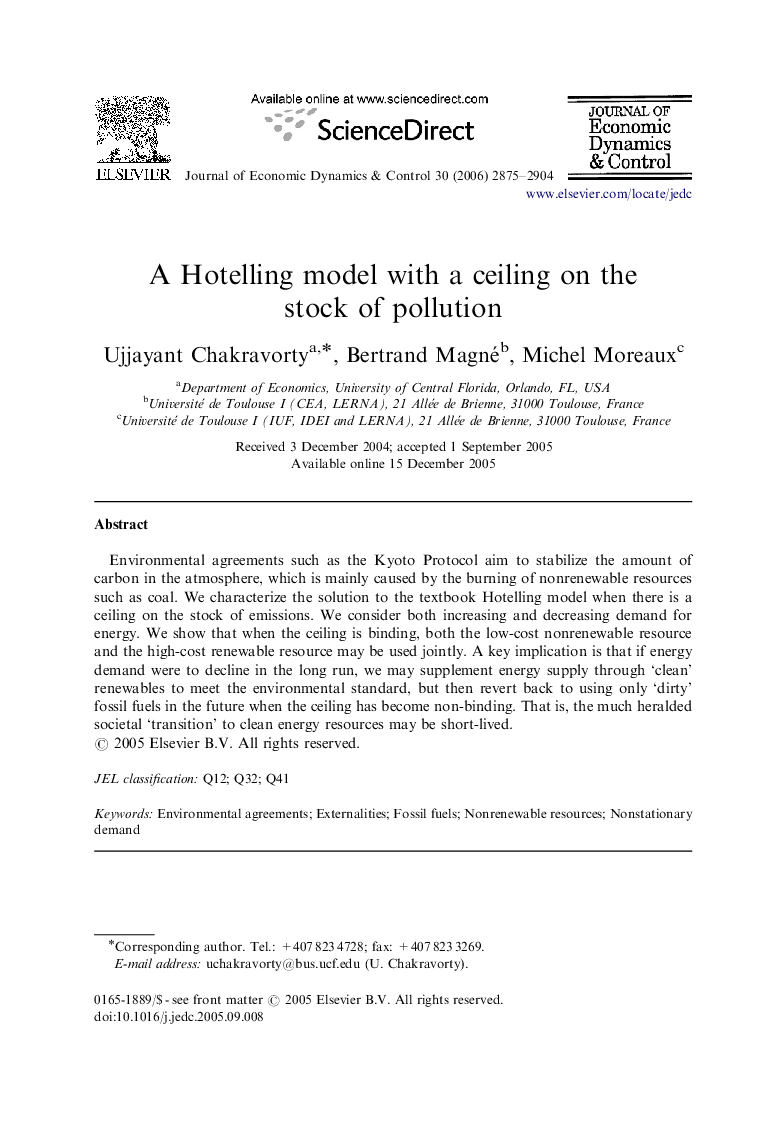| Article ID | Journal | Published Year | Pages | File Type |
|---|---|---|---|---|
| 5099958 | Journal of Economic Dynamics and Control | 2006 | 30 Pages |
Abstract
Environmental agreements such as the Kyoto Protocol aim to stabilize the amount of carbon in the atmosphere, which is mainly caused by the burning of nonrenewable resources such as coal. We characterize the solution to the textbook Hotelling model when there is a ceiling on the stock of emissions. We consider both increasing and decreasing demand for energy. We show that when the ceiling is binding, both the low-cost nonrenewable resource and the high-cost renewable resource may be used jointly. A key implication is that if energy demand were to decline in the long run, we may supplement energy supply through 'clean' renewables to meet the environmental standard, but then revert back to using only 'dirty' fossil fuels in the future when the ceiling has become non-binding. That is, the much heralded societal 'transition' to clean energy resources may be short-lived.
Related Topics
Physical Sciences and Engineering
Mathematics
Control and Optimization
Authors
Ujjayant Chakravorty, Bertrand Magné, Michel Moreaux,
